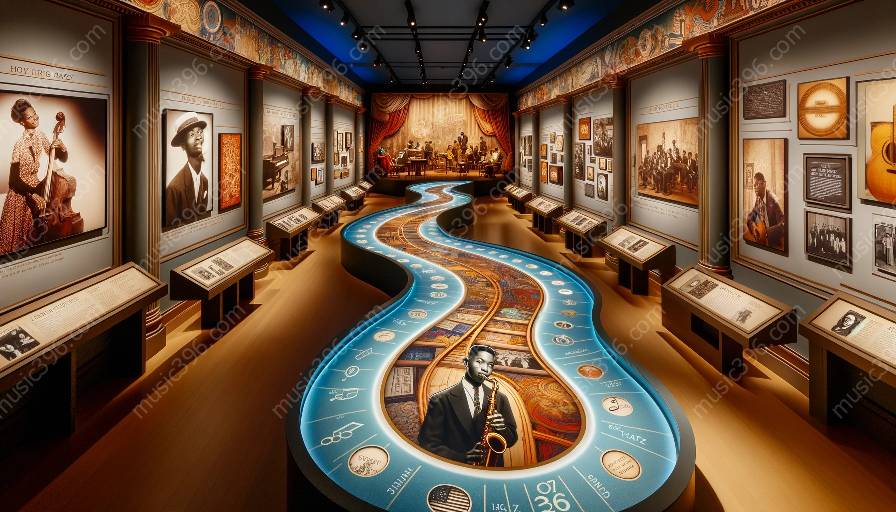When exploring the evolution of jazz, it becomes evident that the genre has undergone significant developments in composition and arrangement. From the early roots of jazz to the modern era, numerous innovations have shaped the way jazz music is composed and arranged.
The Birth of Jazz and Early Innovations
Jazz originated in the late 19th and early 20th centuries, primarily in the African-American communities of New Orleans. The blend of African rhythms and European harmonic structures brought about a unique musical form, characterized by improvisation and syncopation. During this early period, several key innovations in composition and arrangement emerged, laying the groundwork for the future of jazz music.
1. Blues Form and Structure: One of the most important innovations in early jazz composition was the onset of the blues form. The 12-bar blues structure, characterized by a specific chord progression, became a fundamental framework for jazz composition and improvisation. This structure provided a foundation for countless jazz compositions and became a defining feature of the genre.
2. Collective Improvisation: In the early days of jazz, collective improvisation was a significant innovation in arrangement. Musicians would come together to improvise simultaneously, creating a unique and collaborative musical experience. This approach to arrangement laid the groundwork for the development of jazz ensembles and the concept of musical dialogue within a group setting.
Harlem Renaissance and Swing Era
The interwar period saw the emergence of the Harlem Renaissance and the rise of the Swing Era, both of which significantly influenced jazz composition and arrangement. Innovations during this time further expanded the possibilities within jazz music and paved the way for new styles and approaches.
3. Big Band Arrangements: The introduction of big band arrangements was a pivotal innovation during the Swing Era. Composers and arrangers such as Duke Ellington and Count Basie led the way in creating intricate and dynamic arrangements for large ensembles. This marked a shift towards more complex orchestration and expanded the possibilities for jazz composition.
4. Bebop and the Birth of Modern Jazz: The advent of bebop in the 1940s brought about a revolution in jazz composition and arrangement. Musicians such as Charlie Parker and Dizzy Gillespie introduced complex harmonic and melodic innovations, leading to a more challenging and intricate approach to jazz composition. Bebop arrangements incorporated rapid tempos, asymmetrical phrasing, and extended harmonies, setting the stage for the modern jazz movement.
Modal Jazz and Avant-Garde Innovations
The mid-20th century witnessed further innovations in jazz composition and arrangement, as musicians began to push the boundaries of traditional harmonic and melodic structures. Modal jazz and avant-garde movements introduced new conceptual approaches to jazz music.
5. Modal Jazz: Pioneered by musicians such as Miles Davis with his album 'Kind of Blue,' modal jazz represented a significant departure from traditional chord-based improvisation. This innovation in composition involved the use of scales or modes as the basis for improvisation and arrangement, allowing for a more open and exploratory approach to jazz music.
6. Free Jazz and Experimentalism: The avant-garde movement in jazz brought about innovations in composition and arrangement that defied conventional norms. Musicians like Ornette Coleman and John Coltrane pushed the boundaries of improvisation and structure, embracing experimental approaches to harmony, form, and instrumentation. Free jazz compositions often featured open-ended structures and extended techniques, challenging established conventions.
Fusion and Contemporary Developments
In the latter half of the 20th century and into the present day, jazz composition and arrangement have continued to evolve, incorporating influences from various musical traditions and technological advancements.
7. Fusion and Cross-Genre Exploration: The fusion movement of the 1960s and 1970s saw jazz musicians blending elements of rock, funk, and world music into their compositions and arrangements. Artists such as Herbie Hancock and Chick Corea embraced electronic instruments and synthesizers, opening up new sonic possibilities and expanding the palette of jazz composition.
8. Contemporary Approaches and Technology: In the 21st century, jazz composition and arrangement have been further shaped by advancements in technology and a diverse range of stylistic influences. From electronic production techniques to global fusion, contemporary jazz compositions continue to defy categorization, embracing innovation and experimentation.
Conclusion
The evolution of jazz composition and arrangement has been marked by continual innovation, from the early blues form to the avant-garde explorations of the contemporary era. These major innovations have not only shaped the musical landscape of jazz but have also influenced the broader trajectory of music history. Through an understanding of these developments, jazz studies can delve into the rich tapestry of jazz music, appreciating the diverse creativity and ingenuity that have defined the genre.





























